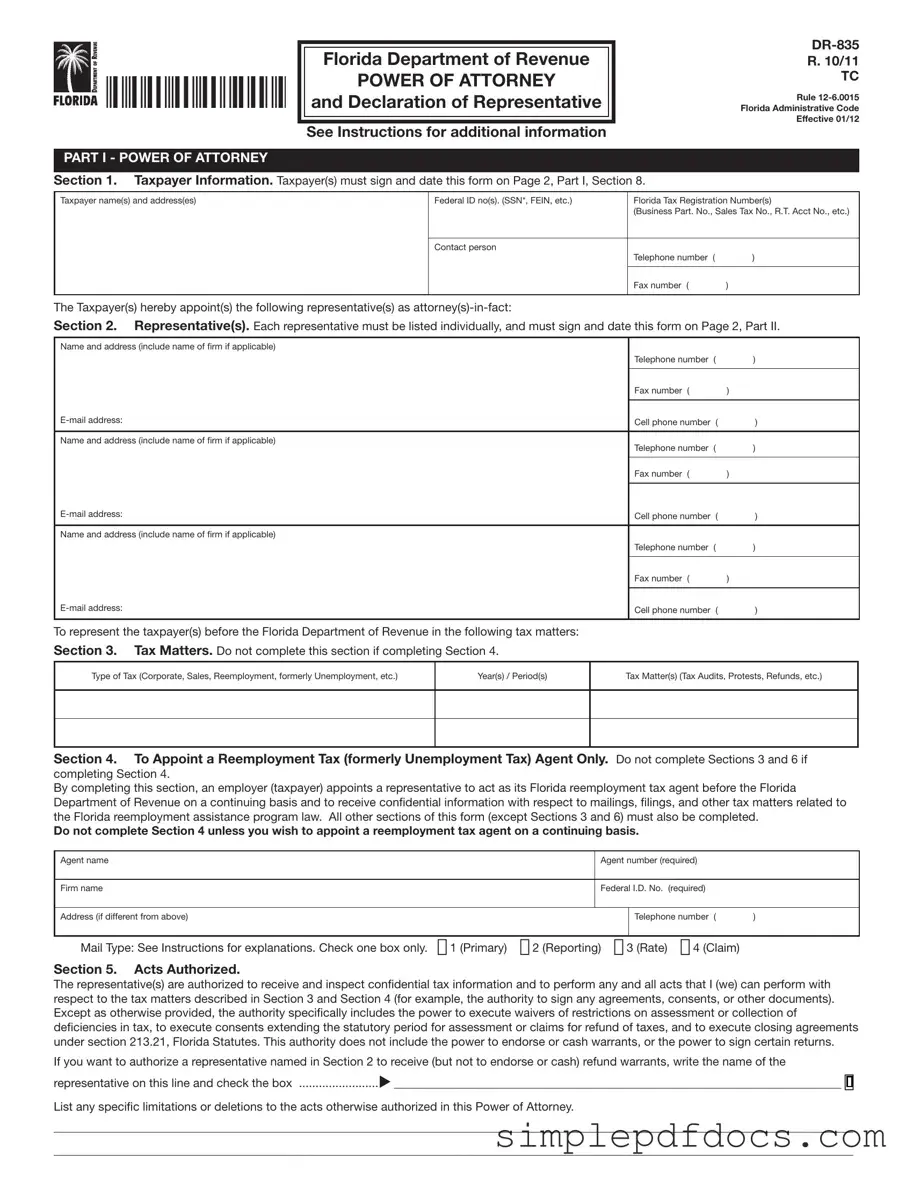The Tax Power of Attorney (POA) DR 835 form plays a crucial role in the realm of tax administration, allowing individuals to designate someone else to act on their behalf in matters related to their taxes. This form is essential for taxpayers who may not have the time or expertise to navigate the complexities of tax regulations and filings. By completing the DR 835, a taxpayer grants specific powers to an appointed representative, enabling them to communicate directly with the tax authorities, receive confidential information, and make decisions regarding tax obligations. The form not only streamlines the process of managing tax affairs but also ensures that the designated representative has the authority to handle various tax-related issues, such as responding to audits, negotiating settlements, or filing appeals. Understanding the nuances of the DR 835 form is vital for both taxpayers and their representatives, as it outlines the scope of authority granted and the responsibilities that come with it. Moreover, the proper execution of this form can prevent misunderstandings and disputes with tax authorities, ultimately leading to a more efficient resolution of tax matters.
